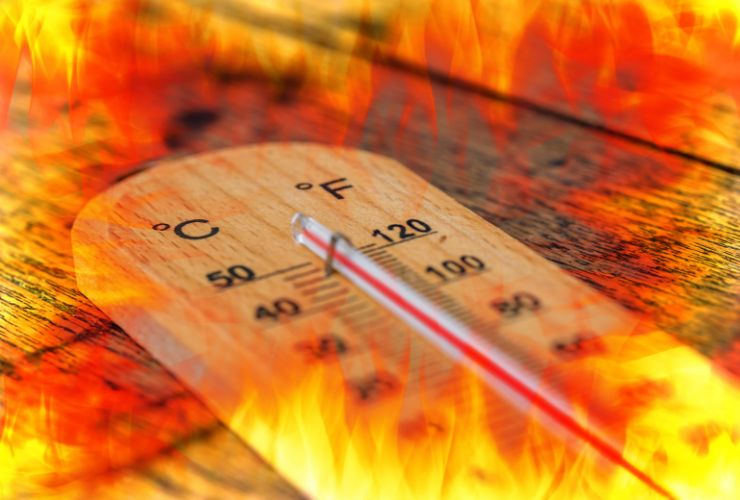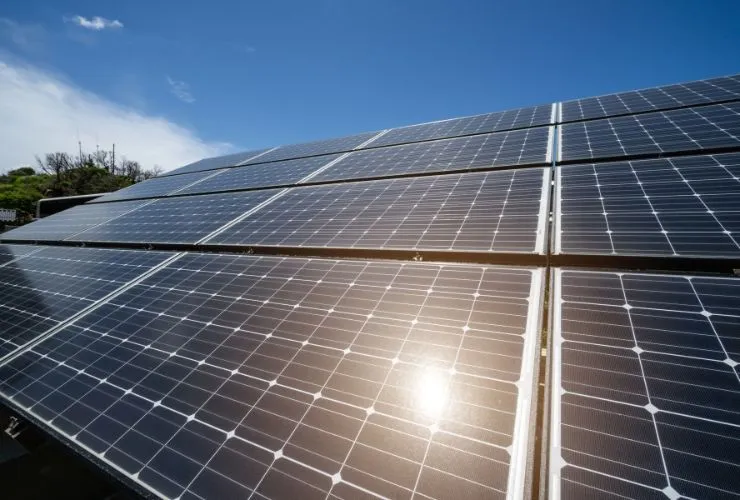Fast read
Solar panels often produce less electricity than their rated capacity because real-world conditions differ from the lab's standard test settings. During peak hours, a 10 kW solar system typically generates only 8 to 9 kW, which surprises many buyers.
The panel's power capacity, known as Pmax, is determined through a flash test conducted in a controlled environment with specific conditions. However, factors like changing light intensity, panel temperature, and air mass affect real-world performance.
Heat reduces panel efficiency, with performance decreasing by 0.3-0.4% per degree above 25°C. NOCT (Nominal Operating Cell Temperature) represents the panel's efficiency under real-world conditions. For example, a 415W panel may produce around 311W under NOCT conditions.
How does temperature affect solar panels and what are Pmax and NOCT?
Many people find it surprising that when they purchase and install solar panels, the panels generally a bit less electricity than their rated capacity. The difference is mainly because real-world conditions are not the same as the controlled environment where the panels are tested. Normally, during the peak hours of the day, a 10 kW solar panel system will generally only produce a maximum power output of 8 to 9 kW. This raises the question, how does temperature affect solar panels and is the heat influencing their output?
Not just a mathematical calculation
Solar energy, while environmentally friendly, is still subject to the whims of Mother Nature. This means that a range of factors can affect its performance. They include cloud cover, air pollution, and atmospheric conditions. All these elements can play a crucial role in determining the amount of sunlight that actually reaches a solar PV panel.
Furthermore, the angle at which sunlight hits the PV modules, known as the “angle of incidence,” also affects energy generation. A panel that’s directly facing the sun will naturally produce more energy than one at a sideway angle.
What is Pmax?
Solar panels are given a capacity rating known as “Pmax” or “Pmpp.” Most current panels have a capacity ranging from 430 to 450W. This rating is obtained through measurements conducted under Standard Test Conditions (STCs) in a laboratory setting.
Establishing these conditions aims to provide a benchmark for comparing the performance and capacity of solar panels across the industry. These Standard Test Conditions consist of 1000W/m2 of light, panel temperature of 25⁰C, and Air Mass AM 1.5.
The panel rating, shown as 430W or 450W in our example, comes from a test called a “flash test.” This test measures the panel’s power capacity in specific conditions.
The test determines the panel’s power output and applies it to the panel’s rating. Important to note that experts optimise these laboratory conditions to achieve the best performance from the solar panels, but replicating such conditions in real-world settings is rare.
The intensity of light, the angle of the sun, the temperature of the panel, and the mass of the air are constantly changing throughout the day, so the power produced by the panel will rarely reach that of the Standard Test Conditions.
One reason is that the light level achieved in most of the Australian continent during the day does not reach 1000W per m2, but even on a sunny day in the middle of the day if one reaches 800 to 900W per square meter one would do well.

Stay realistic
Solar energy adopters must have realistic expectations of the energy generation they can achieve. When considering sunlight hours and energy generation, it is more practical to focus on the average rather than the peak potential. You can use the output calculator on this website to help with this.
How does temperature affect the solar panel output?
In particular, the temperature of the solar panel and cells will be higher than that of the ambient STC air temperature. Since the sun shining on the panel creates heat, heat reduces the panels’ performance. So on a 25⁰ C day, the panel will be at a higher temperature.
This is usually around 20⁰C to 25⁰C higher than the ambient air temperature. Solar panel’s performance will decrease by between 0.3-0.4% per degree above 25⁰C that the panel gets to. So if a panel is at 20⁰C to 25⁰C above ambient air temperature, the panel is around 10% down on the performance rating at STCs.
The role of temperature in solar panel efficiency
Heat is one of the critical factors that impact solar panel efficiency. While solar panels are designed to absorb sunlight and convert it into electricity, they aren’t as effective at dissipating the heat that comes with it.
High temperatures can damage solar panels and make them degrade faster. It’s worth noting that not all solar panels are affected by heat in the same way; this is where the quality of the solar panel, the materials used, and its design come into play. Panels made of monocrystalline silicon, for instance, tend to be more efficient and heat-tolerant than their polycrystalline counterparts.
What is NOCT?
NOCT stands for Nominal Operating Cell Temperature. It refers to the temperature of a photovoltaic (PV) cell in a solar panel during standard test conditions. The NOCT rating is significant since it determines the panel’s efficiency at a specific temperature, usually about 20°C.
The calculation of NOCT (Nominal Operating Cell Temperature) commonly expresses the result in degrees Celsius (°C). It considers various variables such as ambient temperature, solar irradiation, and wind speed to determine the operating temperature of solar cells under nominal conditions. In simple terms, it shows the panel’s performance in real-world conditions.
They measure this at 800W/m2 of light, 20⁰C ambient temperature, module operating temperature at approximately 43-45⁰C, and Air Mass AM 1.5. Under these conditions, a panel rated at 415Wp at Standard Test Conditions will have an expected power output of around 311W. This will vary a little for different brands of panels.
This means a solar system with a 16 x 415W panel would be rated at 6640W (6.64kW peak). However, the power you will generally see out of the system during peak conditions is closer to 16 x 311W = 4976W.

Incorporating the NOCT into the solar system design
When planning a solar installation, particularly in regions where temperature fluctuations are significant, the NOCT becomes an invaluable tool. Knowing the NOCT helps with designing systems so that solar panels can work at their best efficiency throughout the year. Furthermore, by knowing the NOCT, homeowners and businesses can have a clearer picture of the energy generation they can expect, thus making financial projections more accurate.
Strategies behind oversizing solar systems
Oversizing a solar system may seem counterintuitive, but it has distinct advantages. The primary benefit of oversizing is to counter the losses associated with real-world conditions – as discussed, solar panels seldom operate at their peak efficiency in the field.
By adding extra panels to the solar power system, owners can make sure they have enough electricity even on cloudy days. This strategy helps prevent future damage to the panels. It ensures that the system will continue to be productive for many years.
Lastly, oversizing is an economical choice; with solar panel prices continually decreasing, and the Australian solar rebate increasing the more panel one adds, increasing the PV system capacity is more affordable than ever and can lead to faster returns on investment.
So is temperature affecting my solar panel?
In summary, Pmax and NOCT are important factors that affect how well solar panels work, especially in hot conditions. Extreme heat can impact the efficiency and lifespan of solar panels because of high temperatures.
Still, manufacturers can mitigate these effects by using temperature-sensitive materials, incorporating cooling systems, and designing panels to operate more efficiently at high temperatures.



